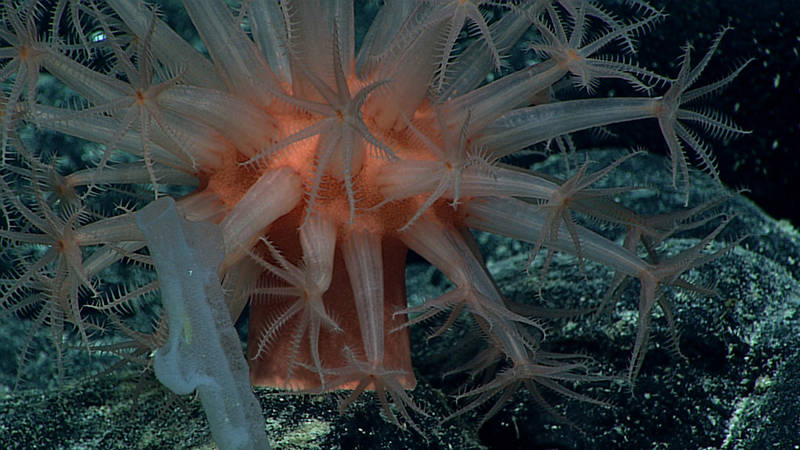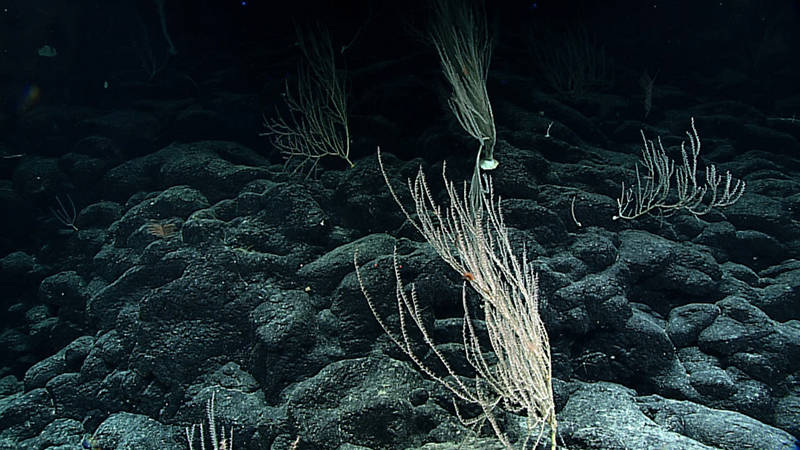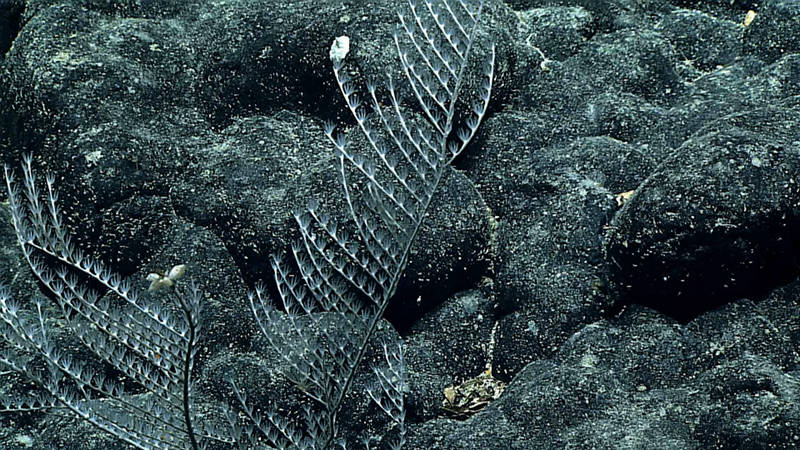
By Dr. Christopher Kelley - Science Team Lead, University of Hawaii
August 3, 2015

The Deep Discoverer remotely operated vehicle gets a close up of a mushroom coral at almost 2,000 meters. Image courtesy of the NOAA Office of Ocean Exploration and Research, 2015 Hohonu Moana. Download larger version (jpg, 1.4 MB).
Kanehunamoku Seamount, previously referred to as the seamount north of French Frigate Shoals, was basically just a small set of contour lines on a NOAA nautical chart until 2001. The University of Hawaii ship Kai’imikai O Kanaloa, or “KOK,” was coming back from other submersible dives sites further north when it stopped by to do some partial mapping at night. In the morning, the decision was made to conduct a Pisces 5 submersible dive to take a look at what geology and biology existed below 1,000 meters.

ROV Deep Discoverer explores a coral wall at North French Frigate Shoals Seamount on August 3, 2015. Image courtesy of the NOAA Office of Ocean Exploration and Research, 2015 Hohonu Moana. Download larger version (jpg, 1.4 MB).
That dive discovered a variety of corals and sponges, as well as fascinating geology. Some of the species collected turned out to be new to science.
Nothing happened there for another six years until 2007, when the ship and submersibles returned to this seamount to do a set of follow up dives. Additional mapping revealed a significant rift zone ridge extending northwest from the seamount and that was the site chosen for the dives. Three dives later, a fantastic dense community of beautiful corals and sponges had been discovered on the ridge at 1,500 meters. Again, more new species had been collected and excellent rock samples were recovered.

Beautiful bamboo coral, Chrysogorgiidae. Image courtesy of the NOAA Office of Ocean Exploration and Research, 2015 Hohonu Moana. Download larger version (jpg, 2.0 MB).
However, since that day, we have been wondering how far down does that community extend and if it does extend below 1,500 meters, are same species present or are new and different ones present, replacing those further up?
These were the questions we wanted to answer on Dive 2that took place on August 3, 2015. Again, to our delight, the seamount hadn’t revealed all of its wonders to us back in 2007.
During Dive 2, we discovered that the fantastic dense community did indeed extend well below 2,000 meters, but now with a whole different set of species. Beautiful bamboo corals (Isididae), chrysogorgiid and primnoid corals, along with weird and beautiful glass sponges (Hexactinellida) dominated the landscape at those depths, whereas precious corals and bubblegum corals (Coralliidae and Paragorgiidae), along with other glass sponges dominated the community further upslope.
There was clearly a transition going on, making these high-density communities all the more interesting. We can’t wait to make more of these types of discoveries as the expedition continues, so stay tuned!